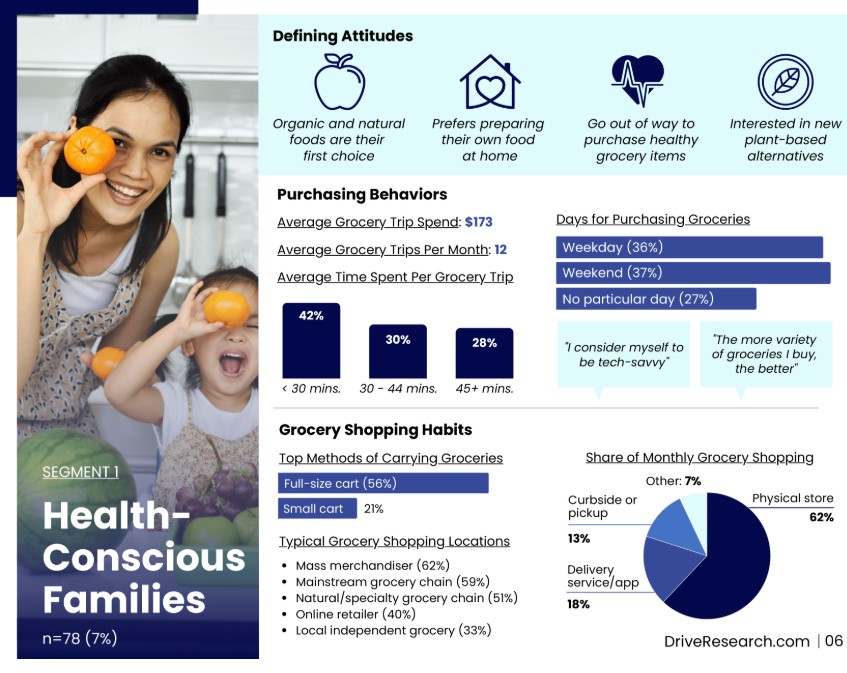
Marketing success isn’t only awarded to those with the flashiest, most creative campaigns. It’s the businesses that truly understand their audience on a deeper level who see the most return.
But how do you know what will resonate most with your audience? It’s simple…ask them.
Consumer insights provide the key to crafting strategies that resonate, engage, and drive results. By analyzing behaviors, preferences, and motivations, brands can make data-driven decisions that lead to stronger connections with their target market.
In this blog, we’ll explore how businesses can leverage consumer insights to refine their marketing strategies, optimize campaigns, and stay ahead of evolving customer expectations.
What Are Consumer Insights?
Consumer insights are data-driven understandings of consumer behaviors, needs, preferences, and attitudes. These insights are derived from a variety of research methods, including surveys, focus groups, social media listening, and sales metrics. By analyzing consumer insights, businesses can make more informed decisions and better tailor their marketing strategies, products, and customer experiences to better meet the needs of their target audience.
Why Using Consumer Insights is Important
Consumer Behavior is Rapidly Changing
Consumer behaviors, preferences, and market conditions are constantly changing. What was relevant two years ago might not accurately reflect current trends, needs, or expectations. Relying on survey data from 2023 can lead to misinformed decisions that fail to resonate with your target audience in 2025.
For example, imagine a company that conducted a survey two years ago to understand consumer preferences for its product packaging. At that time, eco-friendly packaging was a growing trend, and most respondents preferred sustainable options.
However, since then, the market has shifted, and new consumer preferences have emerged, such as a preference for convenience and on-the-go packaging. If the company were to use the old survey data to drive its next marketing campaign, it might miss out on the current demand for packaging innovation, resulting in a campaign that doesn’t align with what consumers truly want right now.
Enhances Personalization
While it’s tempting to make broad generalizations like “female millennials” when describing our customer base, it’s important to remember that marketing strategies can’t be one-size-fits-all. As a consumer insights market research company, we specialize in diving deeper into customer data to segment audiences into distinct groups based on shared traits, behaviors, and preferences.
By understanding the unique characteristics of each segment, our clients can create tailored marketing campaigns that speak directly to the needs and desires of each group, leading to more relevant and impactful engagement.
Here is an example of a grocery shopping customer segment we created.

Reduces Risk
Consumer insights give companies a clearer understanding of what marketing messaging and design resonates with their target audience, which helps avoid costly mistakes.
Even Harvard Business Review echoes this sentiment by stating companies that use data-driven insights make smarter investments and see higher returns. They report that businesses that integrate customer insights into their decision-making process are 3 times more likely to experience improved performance compared to those that don’t.
Without consumer insights, businesses might invest heavily in campaigns that don’t align with current customer preferences, resulting in wasted resources. For instance, a brand might launch a marketing campaign that could fail to capture the audience’s attention due to a disconnect with their pain points. Data-driven decisions are essential for mitigating these risks, as they provide a clearer picture of customer expectations, behaviors, and preferences.
How to Collect Consumer Insights. Marketing Analytics
Online Surveys
An online survey will allow your brand to fill in the gaps that you’re unable to fill through marketing analytics tools alone.
While data analytics software might lend insight into consumer trends, an online survey allows your company to take the guesswork out of the equation.
In an online survey, a customer is able to tell you exactly what they need and expect of your company in order to retain their business.
For example, your in-house analytics tools might be telling you business is down by 50%, but an online survey has the capability to tell you why the numbers are declining.
For companies looking to dive deeper into consumer insights, a brand awareness survey or a customer satisfaction survey is a great place to start.
These online surveys bring light to consumer behavior and customer needs, drawing more consumer insights to power future marketing strategies.
Marketing Analytics
It’s clear that data-driven marketing is here to stay. And utilizing the marketing analytics tools that are readily available to your marketing team can be a great way to collect consumer insights.
Analytics platforms allow your brand to get a comprehensive overview of its consumers and competitors across several different channels, bringing in fresh consumer insights daily as new data is collected.
Here are a few ways to collect consumer insights using marketing analytics:
- Social Listening: Stay engaged with consumers and keep up-to-date with industry trends.
- Predictive Analytics: Through statistical analysis of past and current data, predictions about the future can be made, allowing businesses to make better, data-driven decisions.
- Competitive Analysis: Stay up to date on what competitors are doing to stay competitive and meet consumers’ needs and wants.
- Customer Analytics and Segmentation: Collect data about customers and group them together based on common characteristics to personalize and target marketing strategies.
- Website Analytics: Collecting information such as time on page, engagement, and where users come from can provide in-depth consumer insights.
Customer Journey Mapping
Very rarely are customer journeys a straight path. More often than not, a customer’s journey with your brand will be very complex.
A customer experience journey map is a visual that shows each experience that your customers have with your brand through different phases.
By identifying the stages of your customers’ journeys, your company will have an in-depth understanding of your consumers’ experiences with your brand and have the opportunity to fill in any bumps and/or gaps that the journey map identifies.
Ultimately, the goal of a customer journey map is to form a long-term relationship with consumers.
The key stages of a customer journey map might include:
- Awareness
- Consideration
- Purchase
- Retention
- Advocacy
Here is a template journey map our market research company created for a client.
Mobile Ethnography
Imagine being able to tag along on a “day in the life” of consumers across the country. Mobile ethnography does just that.
This type of consumer insights study observes consumers in a natural environment without the added worry of COVID-19 and proper social distancing.
Through the use of a smartphone, participants will share their experiences as consumers of your brand through video, audio, open-ended survey questions, and polls.
This market research methodology makes it possible to:
- Tag along on in-person shopping trips
- See inside a household’s refrigerator
- Understand how consumers use their vacuum cleaners
- Observe how a handyman organized their tools in their garage
- Other day-to-day activities
The data collected through a mobile ethnography research study will be extremely beneficial to formulating actionable consumer insights since you’ll get a much closer look at consumer behavior.
Examples of Using Consumer Insights
From our experience, consumer insights can mean a number of different things. That’s because the data a company hopes to learn about their audience will differ based on their unique business and offerings.
Here are some common examples of consumer insights and how they help shape a business:
- Buying Motivations: A retailer discovers that their customers are increasingly motivated to purchase eco-friendly products. This insight could lead to a shift in product offerings and marketing messaging that highlights sustainability.
- Brand Perception: A brand learns that consumers view it as outdated or out of touch with current trends. With this insight, the brand may decide to rebrand, update its product line, or launch a targeted marketing campaign to change public perception.
- Customer Pain Points: Through customer feedback, a company learns that users are frustrated with the complexity of their online checkout process. This insight prompts a redesign of the checkout experience, improving user satisfaction and reducing cart abandonment.
- Product Preferences: After analyzing customer reviews, a food company realizes that its target audience prefers organic ingredients, leading to the launch of a new line of products with a focus on organic sourcing.
- Price Sensitivity: A service provider finds through market research that customers are highly sensitive to price changes, and small price increases lead to a significant drop in sales. This insight allows the company to adjust its pricing strategy to maintain customer loyalty.
Contact Our Market Research Company
Drive Research is a global market research company. Our team of experts helps organizations across the world execute various market research studies to solve unique business challenges. Interested in conducting a market research study with Drive Research? Contact us today.



